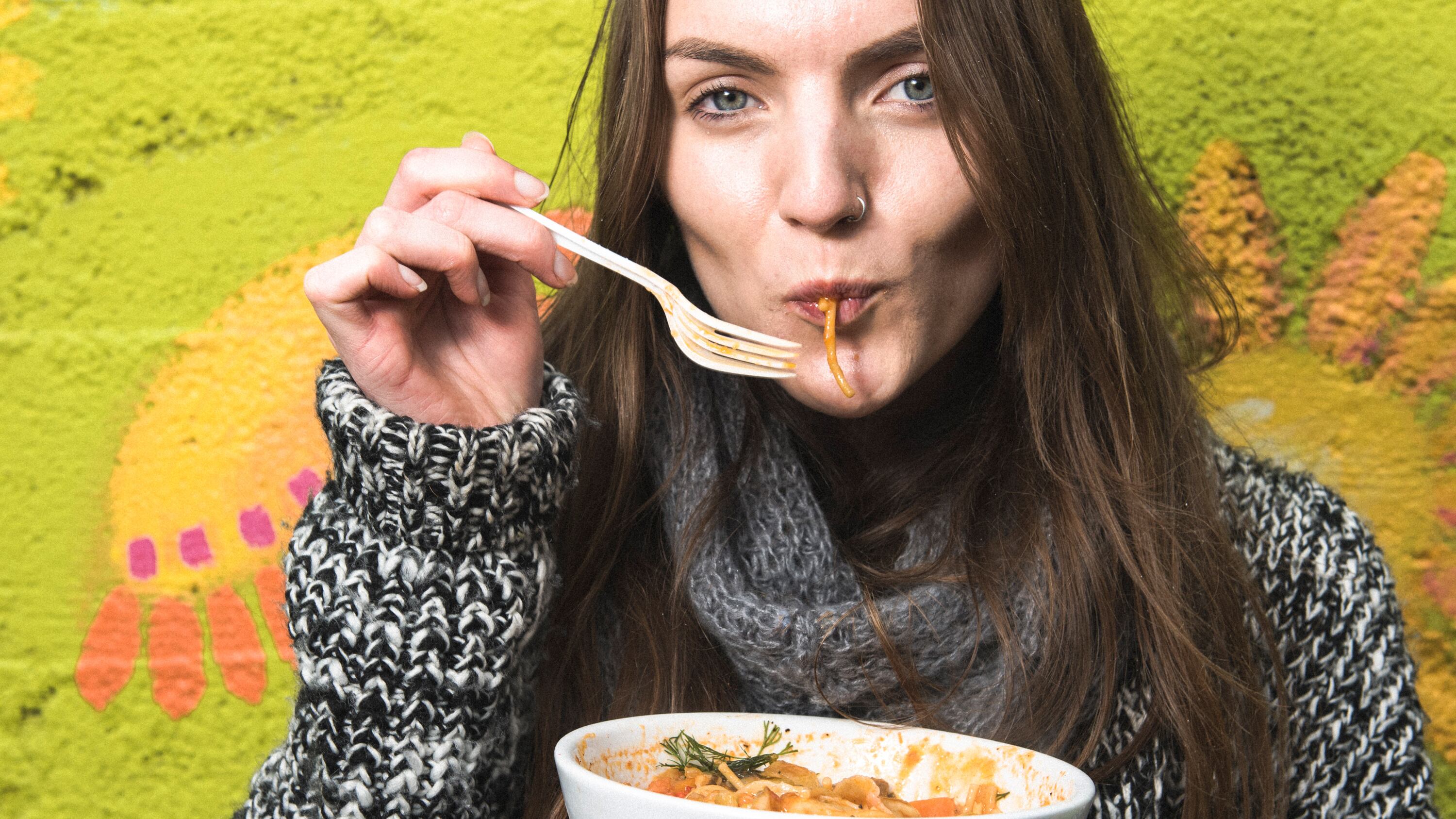The 'Stans of Central Asia are a melting pot of cultures in a way much more profound and ancient than the United States. Tucked between Europe and Asia, countries such as Uzbekistan, Kazakhstan and Kyrgyzstan are a fulcrum between two empires, Russia and China. Both influences show up in the pots on their stoves.
Among the interesting twists on the region's food is lagman—the ramen of the 'Stans.

If the dish were called "Russian ramen," who knows, it might be the next cronut. Instead, it's one of Portland's rarest exotic soups, and a ready-made lesson in the way most foods we eat today qualify as "fusion."
The place to eat lagman in Portland is at Traditional Russian Cuisine, a cart that recently moved to Northeast Sandy Boulevard. Despite the name, this cart serves more than borscht, blini, piroshky and pelmeni, digging into the Central Asian specialties of co-owner Bella Abdullaeva's Uzbek grandmother.
Noodles emigrated from China to Central Asia along with two Muslim minorities: the Uyghur and the Dungan (Hui). Noodles' popularity grew in places like Uzbekistan until they became part of the local cuisine. Tsarist Russia in the 19th century and Communist Russia in the 20th century each conquered most of Central Asia, not only importing the natural resources, but some of the food as well. So if you search YouTube, you'll find Russian cooking shows demonstrating how to make lagman.
"Lagman" sounds authentically foreign, even to enlightened hipsters who insist they have no friends who voted for Donald Trump. Like ramen, it was inspired by China's lamian (literally "pulled noodles"), a limitless canvas for the cultural influences of the cook making it. It can be served wet or dry and with whatever toppings or vegetables are local and seasonal.
Compared to Japanese ramen, lagman is closer to the Chinese original. Ramen primarily uses pork or chicken broths. Lagman, like the original lamian, usually begins with beef or lamb. And the noodles for ramen are usually thinner; typical udon noodles are closer in size to classic lamian. Ramen is usually made by cutting thin sheets of dough, much like Italian pasta. Lamian is stretched, twisted, divided and re-stretched, during what looks like an impossibly convoluted game of cat's cradle. The finished product is similar: round, slightly chewy wheat noodles.

Traditional Russian Cuisine doesn't employ either technique—it uses dry noodles because, as Abdullaeva explained, not enough people order the lagman to justify the labor of handmade noodles.
But her soup ($7) is still enjoyable and unique to Portland. The broth, tinted red from tomato, is meaty, punctuated with chunks of stewed beef. Cabbage, scallion, carrot and squash give it heartiness. Pelmeni, dumplings filled with ground lamb, swim in the broth as well, providing a more delicate, yet toothsome noodle for the soup.
Traditional Russian Cuisine is at Rose City Food Park, 5235 NE Sandy Blvd., 503-449-1531, pdxrussiancuisine.com. Nick Zukin is the owner of Mi Mero Mole on Southeast Division Street and in Old Town, and co-author of The Artisan Jewish Deli at Home.

Why Are Tokyo Ramen Shops Suddenly Taking Over Portland?
We Tried 39 Bowls of Portland Ramen—These Are the Very Best, By Style
Pono Farm's Shabu Shabu Takes Portland Hot Pot To A New Level
Are You Confused About Hot Pot? Here's How Long You Should Cook Everything For
Tournant's Pozole Night is a Soul-Warming Event Built On Locally Made Hominy
The Epic Journey of the Family Behind Ha VL, Portland's Most Famous Broth Masters
Three Soups At Ha VL You Must Try
Jacqueline Is Reviving Cioppino, The West Coast's Sloppiest, Spiciest, Fishiest Soup
Lagman Is the Ramen of Central Asia, And One of Portland's Rarest Exotic Soups
The Kenny & Zuke's Chef Reveals How to Make His Much-Loved Hungarian Mushroom Soup
The XLB Soup Dumpling Craze Is Finally Coming To Portland
